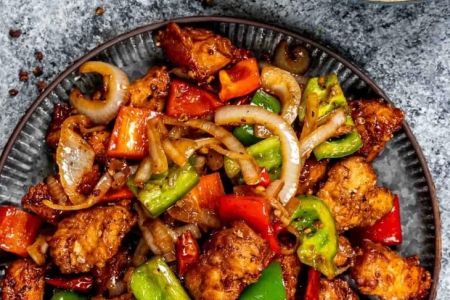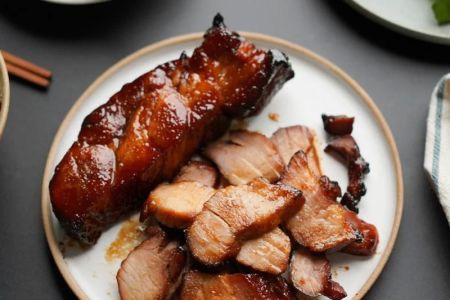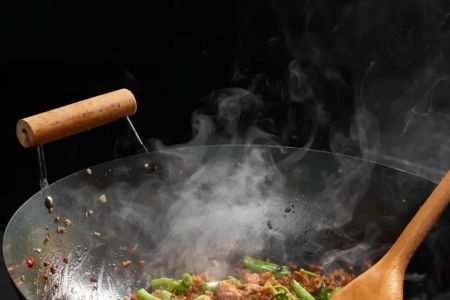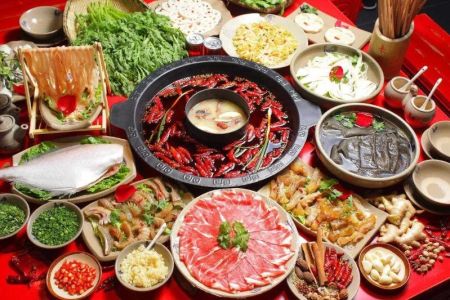How I Started Making My Own Chinese Dim Sum
Chinese Dim Sum is one of those culinary delights that not only satisfies the stomach but also brings people together. Growing up in a city where Chinese food was a staple, I often found myself indulging in dim sum at local restaurants. But there came a time when I wanted to challenge myself and create these bite-sized, flavorful dishes right in my own kitchen. The journey of making my own dim sum was not just about following recipes; it was about embracing a tradition, learning the art, and sharing it with friends and family. And let me tell you, the experience was well worth the effort!
Why Make Dim Sum at Home?
If you're wondering whether it's worth the time and effort to make dim sum at home, let me assure you—absolutely yes! Not only does homemade dim sum give you the chance to experiment with flavors, but it also opens the door to creativity. You can fill the dumplings with ingredients that suit your personal taste, making them healthier or more indulgent, depending on your mood. Plus, the joy of mastering traditional recipes and techniques is incredibly rewarding. And don’t get me started on the satisfaction of serving your family and friends dishes that you've carefully crafted yourself!
Essential Ingredients for Making Dim Sum
Before diving into the actual cooking process, let's take a look at the basic ingredients you'll need to start making dim sum at home. You don't need to be intimidated by the list—most of the ingredients can be found at any local Asian grocery store or even large supermarkets that carry international foods.
Common Ingredients
- Dim Sum Dough: Flour, cornstarch, and water are the base for your dough. You'll need this for dumplings, buns, and even the wrappers for spring rolls.
- Meats and Vegetables: Pork, chicken, shrimp, and vegetables like cabbage and mushrooms are staples in dim sum fillings. For a vegetarian twist, you can use tofu or even sweet potato.
- Herbs and Spices: Ginger, garlic, and green onions are commonly used to season the fillings. Soy sauce, sesame oil, and oyster sauce are the key ingredients to give the dim sum its umami depth.
- Steaming Tools: A bamboo steamer is often used for the best results, but if you don't have one, a metal steamer or a pot with a lid will work just fine.
Where to Find Your Ingredients
One of the most exciting parts of making dim sum is shopping for the ingredients. While it’s definitely possible to find most items at your local grocery store, I highly recommend checking out Asian markets. You'll discover not only authentic ingredients but also unique variations that might inspire you to experiment with different types of dim sum!
Step-by-Step Guide to Making Dim Sum
Now that you’ve gathered your ingredients, it’s time to roll up your sleeves and start cooking. Let’s break down the process into a few easy-to-follow steps. Here’s a basic guide for making dumplings and buns, two of the most popular types of dim sum.
Making Dumplings
- Prepare the Filling: Start by chopping your choice of meat or vegetables into small pieces. Sauté them with garlic, ginger, and green onions. Season with soy sauce, sesame oil, and a dash of salt and pepper.
- Prepare the Dough: In a bowl, mix flour and cornstarch. Gradually add water until the mixture forms a smooth dough. Knead it for about 10 minutes until it’s soft and elastic.
- Shape the Dumplings: Roll the dough into small balls and then flatten them into round circles. Place a spoonful of the filling in the center, and carefully fold the edges to seal the dumpling. Don’t forget to crimp the edges to ensure they stay together while steaming!
- Steam the Dumplings: Place the dumplings in a bamboo steamer lined with parchment paper or cabbage leaves to prevent sticking. Steam over high heat for about 10-15 minutes, and voilà—you have homemade dumplings!
Making Buns
- Prepare the Filling: For the bun filling, I love using BBQ pork (Char Siu), which is sweet, savory, and full of flavor. You can also make a vegetable or shrimp filling if you prefer.
- Prepare the Dough: The bun dough requires a little more effort, as it’s a yeast-based dough. Combine flour, sugar, yeast, and a pinch of salt in a bowl. Gradually add water and knead until you achieve a smooth, elastic dough.
- Shape the Buns: Roll the dough into small balls, flatten them into circles, and add your filling. Seal the edges carefully, making sure the filling is completely enclosed.
- Steam the Buns: Just like the dumplings, place the buns in a steamer and cook them for around 15-20 minutes. The buns should turn soft and fluffy with a delightful, warm filling inside.
Tips and Tricks for Perfect Dim Sum
Making dim sum may sound like a lot of work, but with these tips, you’ll be on your way to making perfect dim sum every time!
Use Fresh Ingredients
For the best taste, always use fresh ingredients. Fresh herbs, meats, and vegetables make all the difference in the final flavor of your dim sum. This is especially important for dishes like dumplings and buns, where the filling is the star.
Don’t Overfill the Dumplings
One common mistake is overstuffing the dumplings. If you add too much filling, the dumplings won’t close properly, and they might burst open while steaming. Keep the filling modest—just enough to fill each dumpling but not overwhelm it.
Experiment with Different Fillings
While traditional dim sum fillings like pork and shrimp are delicious, don’t hesitate to try new ingredients. I’ve experimented with everything from mushrooms and tofu to beef and even fruit fillings! Dim sum is versatile, so have fun with it.
Sharing Dim Sum with Family and Friends
What’s the best part of making dim sum at home? Sharing it with others, of course! Once I mastered the art of making my own dim sum, I invited family and friends over to enjoy the fruits of my labor. We sat around the table, steaming baskets of dumplings and buns, dipping them in soy sauce and hoisin sauce, and chatting away. It was a celebration of not just food but also of tradition and connection.
Why Dim Sum Is More Than Just a Meal
Dim sum is so much more than just food—it’s an experience. Whether you’re at a bustling dim sum restaurant or making it yourself at home, it’s about enjoying the small, flavorful bites with the people you love. It’s about tradition, creativity, and the joy of sharing delicious food with others. And once you learn how to make your own, you’ll never want to go back to store-bought versions!






![Top Chinese Restaurants for Authentic Cantonese Cuisine in [Your City]](https://img.gochinarose.com/d33/2507/4157910400_450x300.webp)
